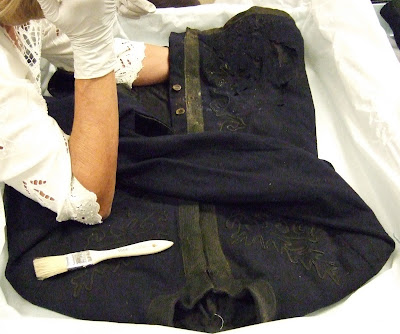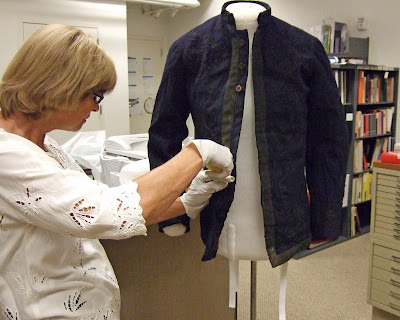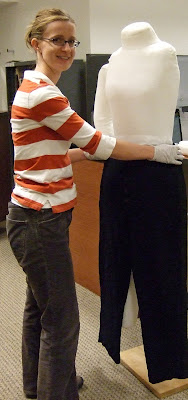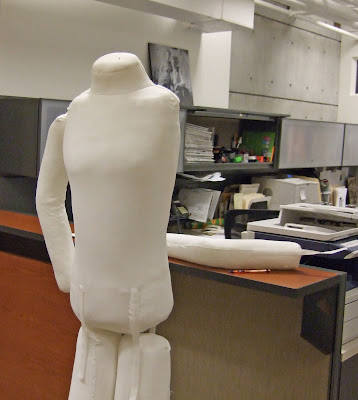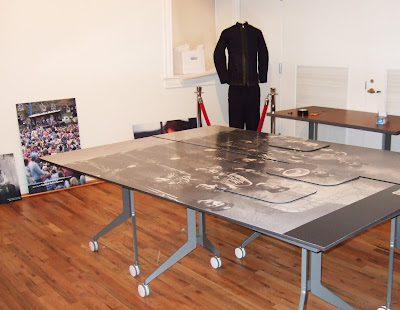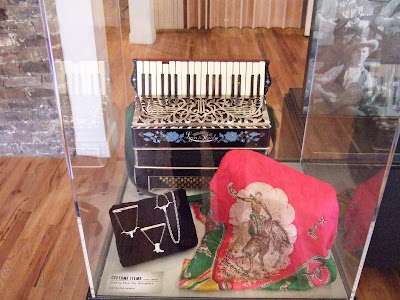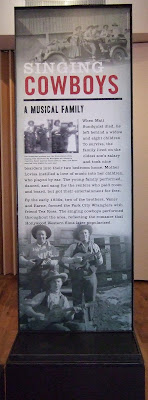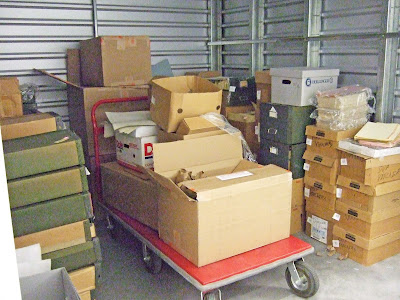 |
| From July 2010 |
The curse of the clean desk is that once it's cleaned, there will inevitably emerge a pile of interesting, albeit complex, items that will land upon it requiring work of some sort. On the other hand, the joy is in the journey to the clean desk. Why else would I choose to become an archivist if I didn't love the challenge of solving the historical puzzle that is a set of records in heavy disarray? Well, there also is the art of the description, which has been such a big part of this experience at the museum this summer.
 |
| From July 2010 |
The funny-looking tube hanging from the ceiling is a fume vent (very handy for dusty and dirty collections such as the New Park Mining Company records I've been working on lately). It's somewhat loud, but as I've been working at this desk, I have hooked the laptop up to the network, and have been listening to my Pandora.com stations at a loud volume to cover the noise.
I really should have taken a before photo. The desk had been covered with items of varied purposes and origins, as well as oversized boxes with their contents. I also had been using a cart to hold several boxes since I kept having to return to the same 6 or 7 boxes to file more items.
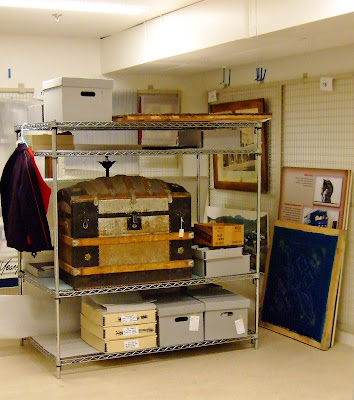 |
| From July 2010 |
I really like having a workspace shared with museum objects. There's just something about being present with all that history that seems to make me smile from the inside out. From the shelves' perspective, to their right are expandable shelving units where all kinds of interesting objects are held. For example, Wendy and I recently made space for the New Park Collection's oversized items by moving a beautiful, yellow, intricately beaded dress that once belonged to one of Park City's earliest millionaires, the Silver Queen (Susanna Egera Bransford Emery Holmes Delitch Engalitcheff -- she was married a few times).
This room was originally a liquor store. Although you cannot see the doors to the right of the desk, there are Utah Department of Alcoholic Beverage Control stickers still on the glass of the doors.
 |
| From July 2010 |
Here's how I left the general files and oversized items yesterday. We've been hanging slips of paper out of the boxes to keep the subseries easily accessible. Miscellaneous items keep popping up in the vouchers that Jenette and Kate have been processing at the storage facility. Now that I've "finished" (until all the vouchers are done, I won't really consider them done) the box lists in an Excel file, it's much easier to locate which box holds a folder I need.
For example, on Thursday, I had created a file for licenses and registrations since we found a registration for a still, among the other items. (Why the miners would have a still up at the mine is ponderous. These fellow spent a great deal of time blasting in the mines, and had large stores of explosives on site. All safety issues aside, the registration said that as long as the paid registration was posted publicly, there was no issue.)
Late yesterday, in a pile of very unrelated items (a document for a course taught by mine manager Tom P. Costas for a local vocational school, Utah Taxpayers Association flyers, and mining injury reports), I found a purchaser's license. It took just seconds to find where that folder I'd created the day before was now housed.
Tom P. Costas is one of the many frequently occurring names we've found in this collection. He's easily remembered for his gorgeous handwriting and flourished signature. His correspondence with W.H.H. Cranmer, mine president, is well worth the read. Yesterday, Emily found some great photos in Past Perfect of Cranmer, Costas, and the mine itself. They will be key to an exhibition of the collection.
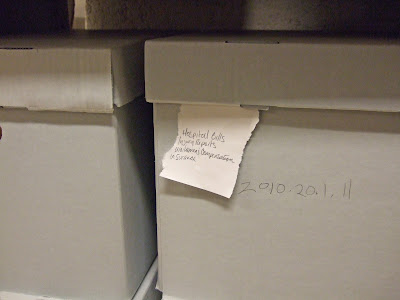 |
| From July 2010 |
It's not pretty, but it works great for the moment until we can say this portion is no longer "in process." However, I'm looking forward to when the box labels arrive and these can be labeled properly.
I also will be very happy when I've properly installed the Archivists' Toolkit. I've tried quite a few times to make the MySQL and AT programs talk to each other in a kind and loving way, but have been very frustrated at my inability to make that happen. The developers had been very helpful, but I haven't heard back recently. Hopefully, we'll be able to resolve the issues and I can start working on the actual EAD finding aid. Otherwise, I'll have to code it by hand, which is no trivial task.
In either case, I don't have much time left out here in Utah to accomplish the task. If need be, I can always make copies of those Excel files (where I've included detailed descriptions of the materials) and other historic documentation I've been collecting along the way, and write the finding aid back home in NJ to email back to Park City. Until then, I'll just keep plugging away at the New Park Mining Company collection.
